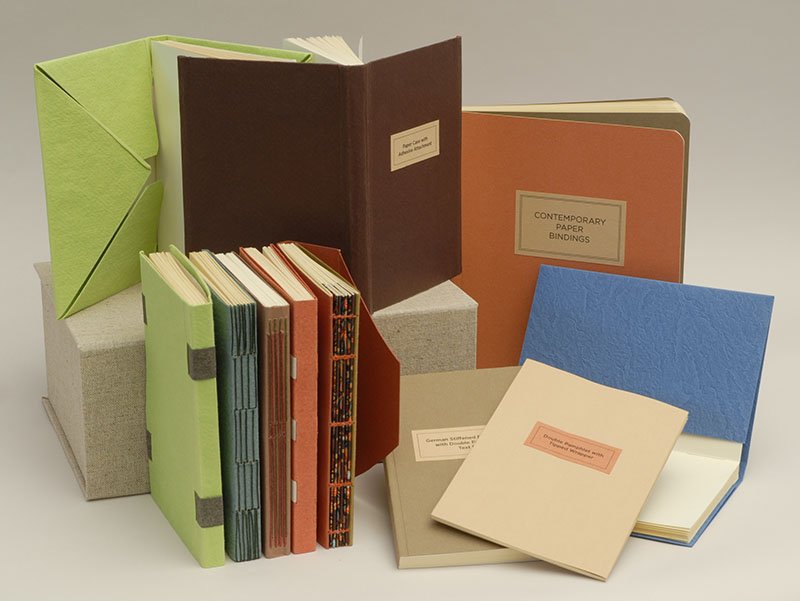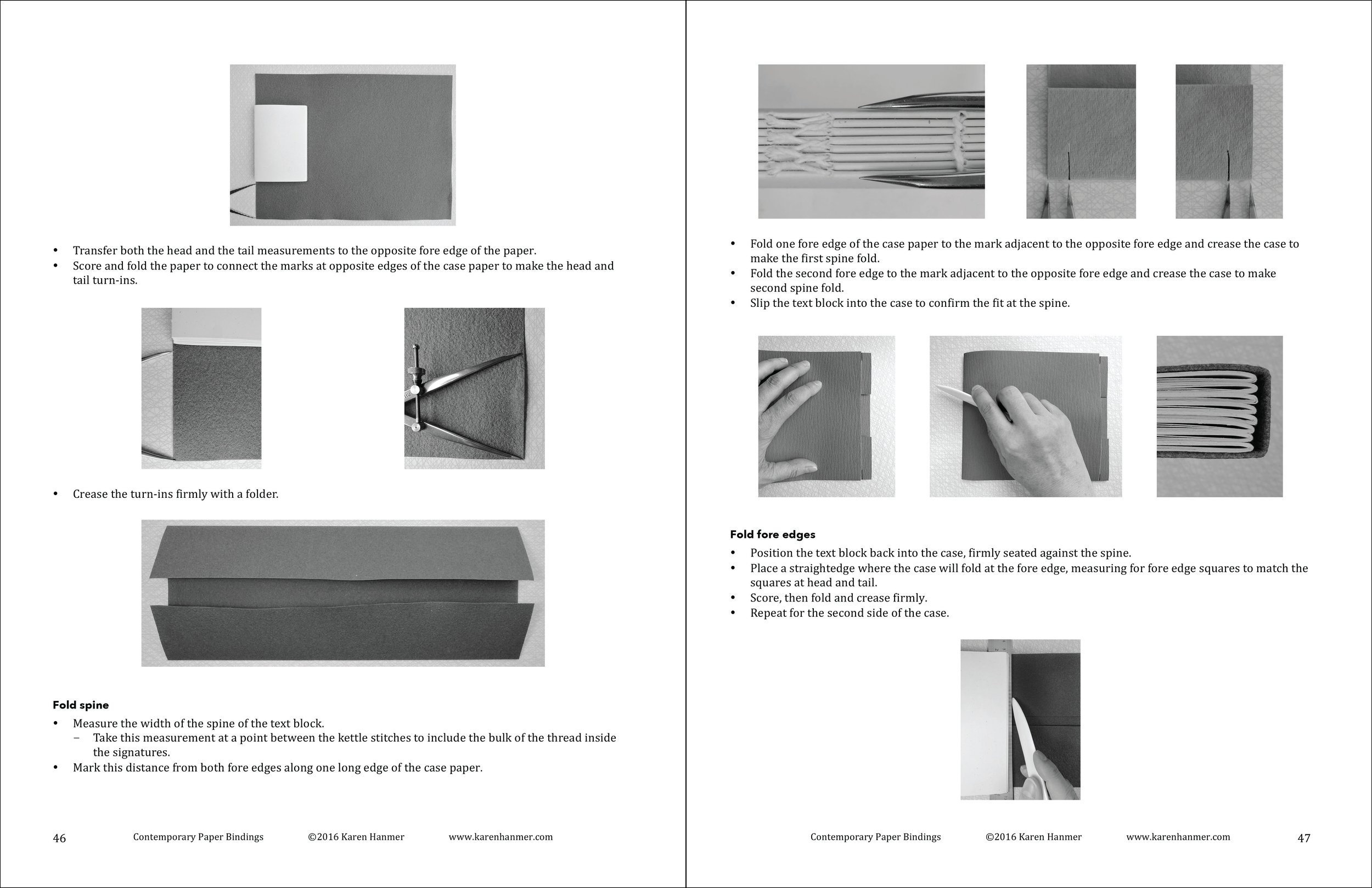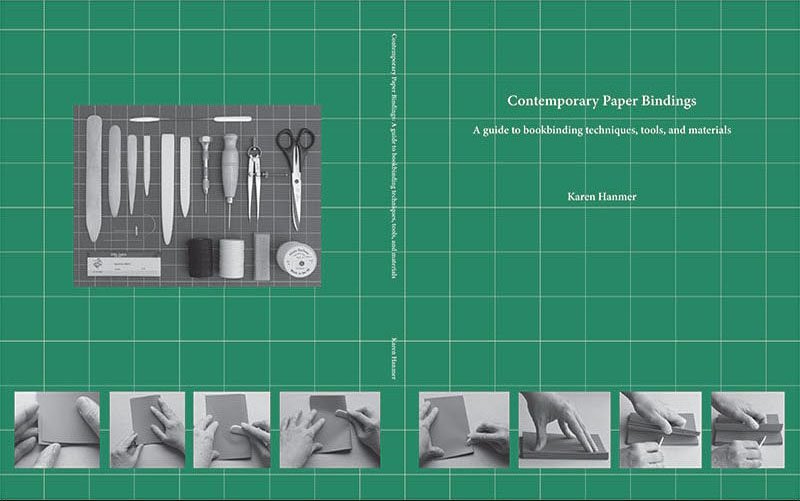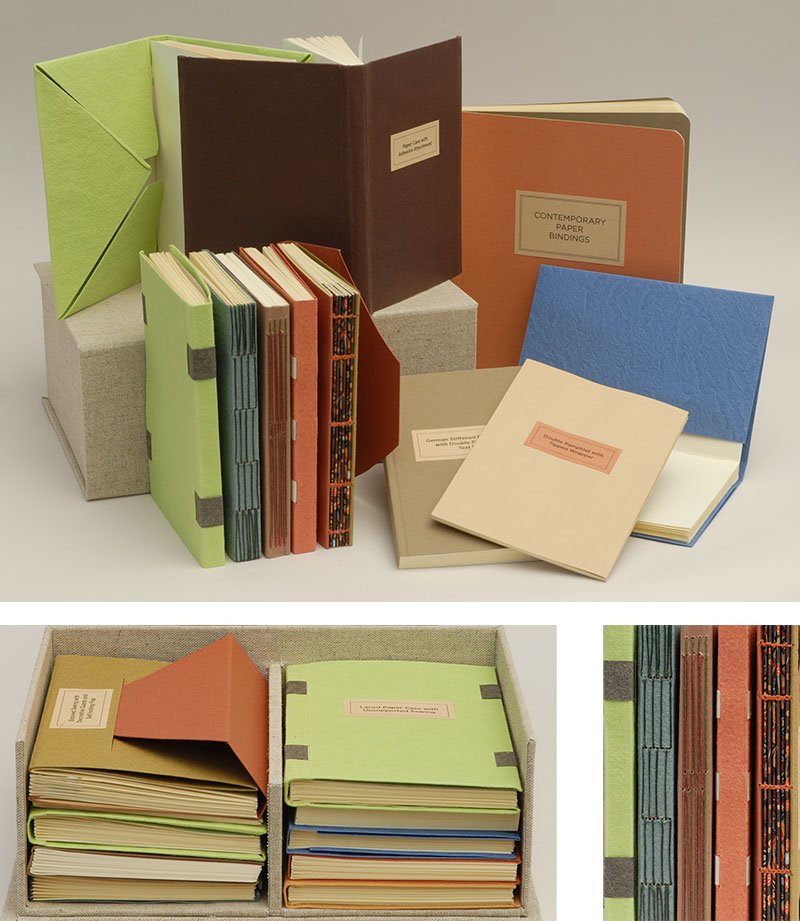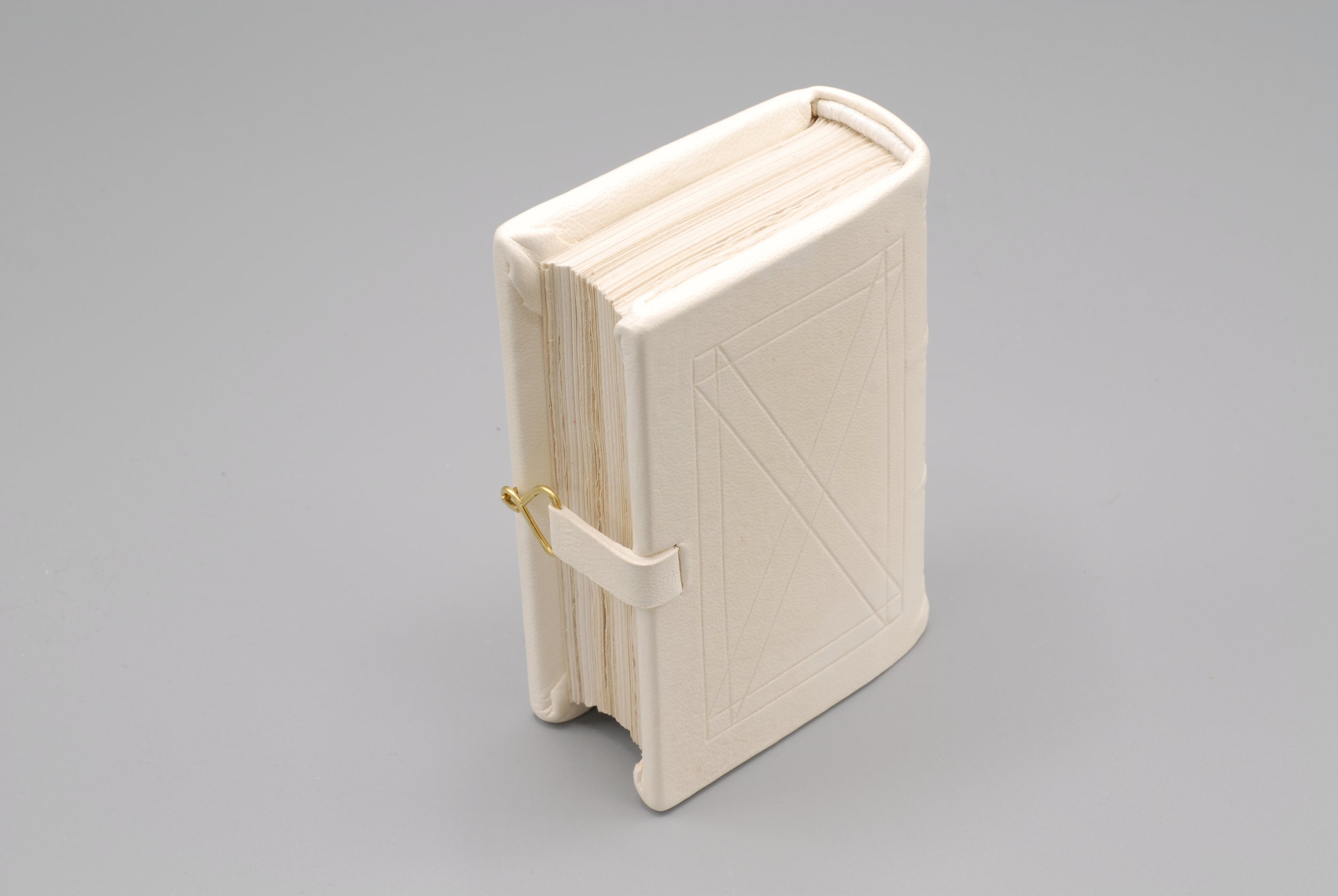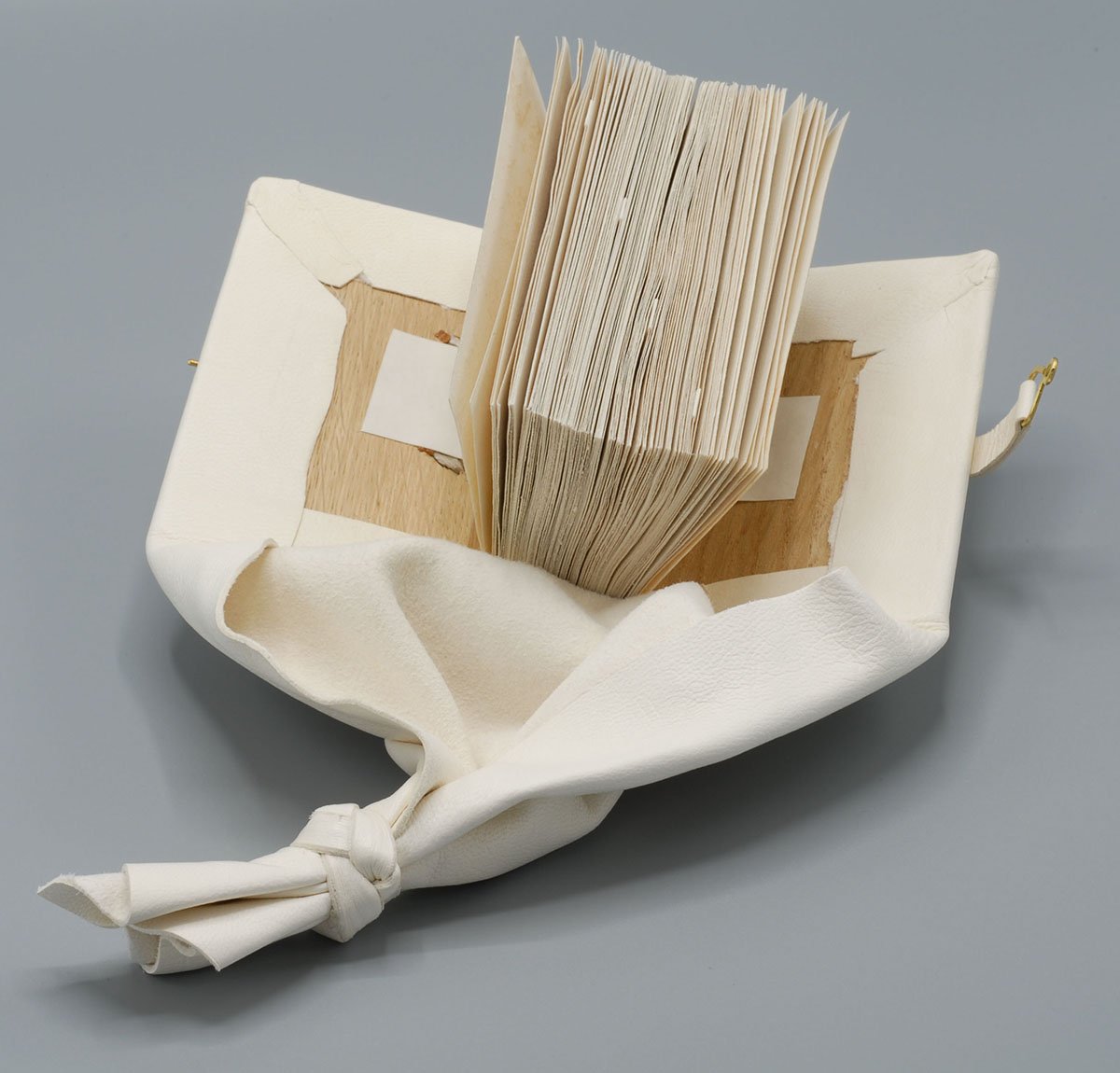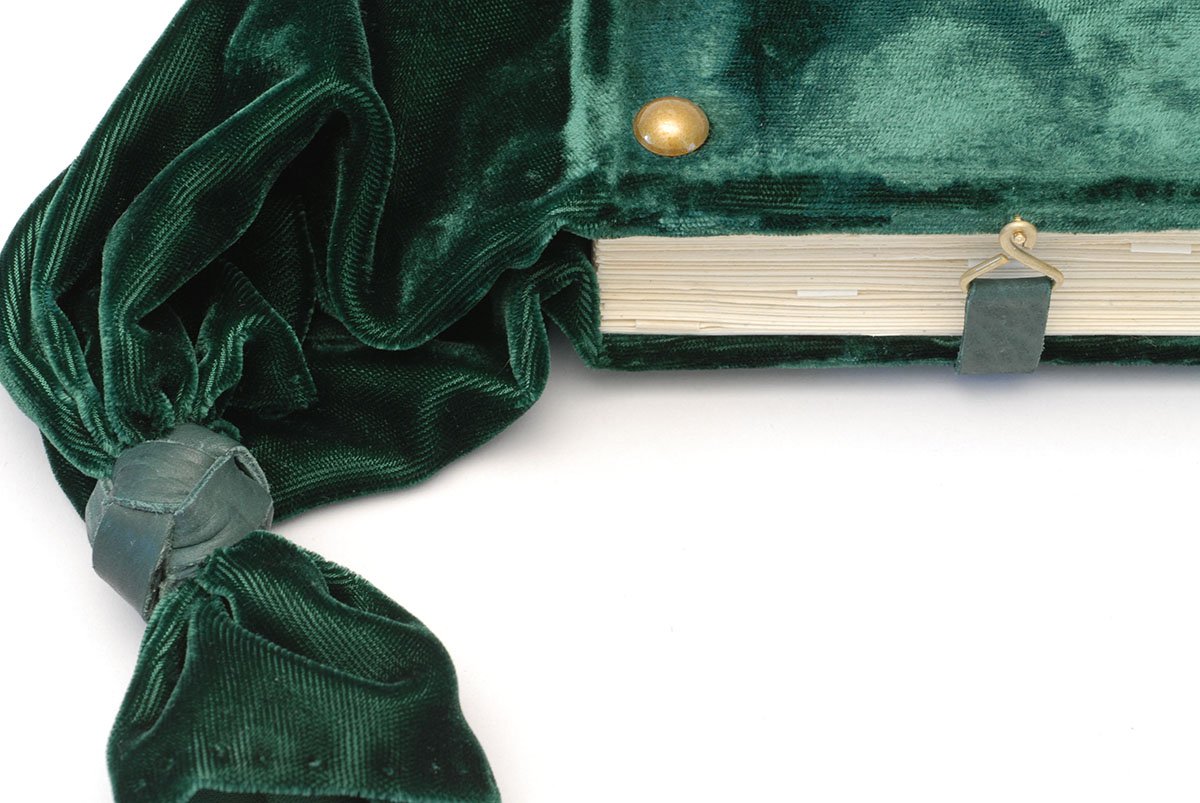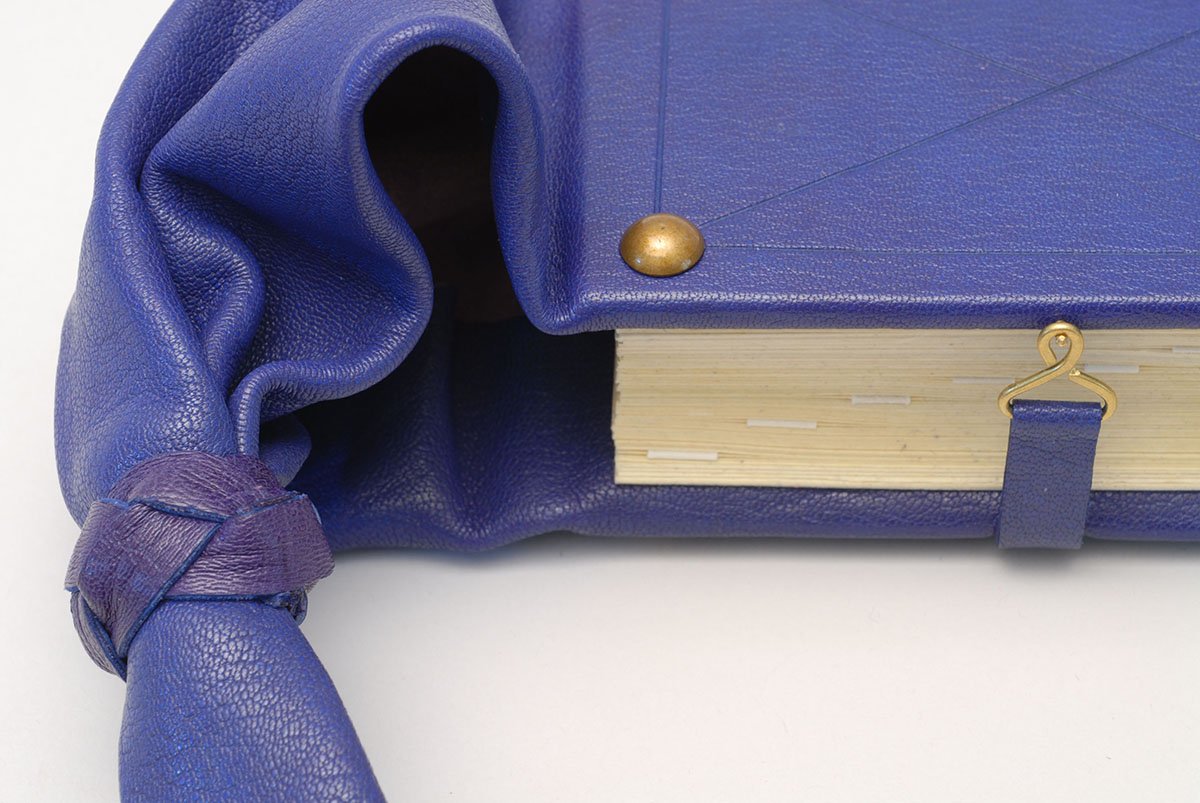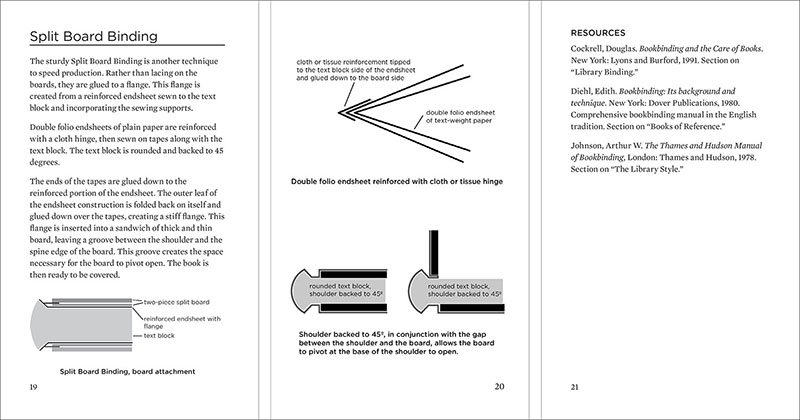 Image 1 of 3
Image 1 of 3

 Image 2 of 3
Image 2 of 3

 Image 3 of 3
Image 3 of 3




18th Century binding model
Eighteenth Century Trade Binding Cutaway Model
The accompanying manual is also available separately, print on demand.
As the number of books being produced increased quickly after the invention of moveable (letterpress) type, binders who were still making books entirely by hand struggled to keep up. Numerous time-saving measures were developed during the first four hundred years of letterpress printing, between the mid-fifteenth and early nineteenth centuries. Yet, the basic structure of leather binding during this time remained the same: the bookblock was sewn onto supports, the spine was shaped, paper boards were laced on, and the book was covered in leather thin enough to be flexible but thick enough to offer support to the joints.
This binding structure model represents binding in the letterpress era before the adaptation of mechanization or time-saving abbreviations. The model is accompanied by a seventeen page illustrated guidebook with bibliography outlining the techniques used to construct a model based on binding practices in the eighteenth century. Many time saving measures and some of the luxury features of books of this era not included in the model are also discussed in the guidebook. Sewn on raised supports, laced into boards of laminated paper, spine lined with printed waste. Endsheets by MarbleSmith Paper, hand-sewn silk endbands, edges sprinkled with acrylic. Covered in calf, blind tooling around bands and boards.
7.75 x 5 x 1”
Please note: these models are made to order and may not be available for immediate delivery. Average turn-around time is six months.
Karen Hanmer is a leader in the field of hands-on education of historical bindings. This accurate and exquisitely detailed cutaway-binding model opens up myriad teaching opportunities to educate the public, students, fellow educators to the inner workings of the historical book. A valuable addition to any rare book collection.
Madelyn Garrett, Former University of Utah rare book curator, Garrett has lectured extensively on the history of the book; established a nationally-recognized book arts program; and conceived of and implemented a statewide K-12 history-of-the-book/bookmaking program.
Eighteenth Century Trade Binding Cutaway Model
The accompanying manual is also available separately, print on demand.
As the number of books being produced increased quickly after the invention of moveable (letterpress) type, binders who were still making books entirely by hand struggled to keep up. Numerous time-saving measures were developed during the first four hundred years of letterpress printing, between the mid-fifteenth and early nineteenth centuries. Yet, the basic structure of leather binding during this time remained the same: the bookblock was sewn onto supports, the spine was shaped, paper boards were laced on, and the book was covered in leather thin enough to be flexible but thick enough to offer support to the joints.
This binding structure model represents binding in the letterpress era before the adaptation of mechanization or time-saving abbreviations. The model is accompanied by a seventeen page illustrated guidebook with bibliography outlining the techniques used to construct a model based on binding practices in the eighteenth century. Many time saving measures and some of the luxury features of books of this era not included in the model are also discussed in the guidebook. Sewn on raised supports, laced into boards of laminated paper, spine lined with printed waste. Endsheets by MarbleSmith Paper, hand-sewn silk endbands, edges sprinkled with acrylic. Covered in calf, blind tooling around bands and boards.
7.75 x 5 x 1”
Please note: these models are made to order and may not be available for immediate delivery. Average turn-around time is six months.
Karen Hanmer is a leader in the field of hands-on education of historical bindings. This accurate and exquisitely detailed cutaway-binding model opens up myriad teaching opportunities to educate the public, students, fellow educators to the inner workings of the historical book. A valuable addition to any rare book collection.
Madelyn Garrett, Former University of Utah rare book curator, Garrett has lectured extensively on the history of the book; established a nationally-recognized book arts program; and conceived of and implemented a statewide K-12 history-of-the-book/bookmaking program.

